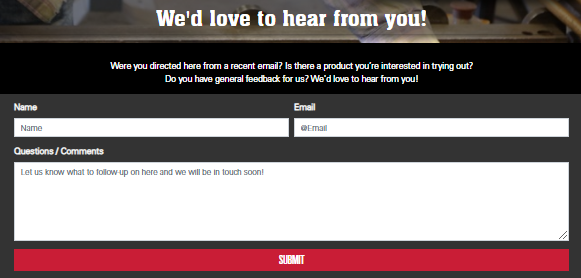14 Nov 11/14/2022
The Top 25 Supplies Every First Aid Kit Should Have
Accidents can happen at any job site, especially hazardous industrial sites, at any given time. In fact, the Bureau of Labor Statistics (BLS), reports that 2.7 million nonfatal workplace injuries occurred in 2020. That's why it's essential to have first aid supplies on-site to address injuries requiring immediate attention. The care administered from these supplies ensures workers receive appropriate aid before professional medical treatment can be provided.

A construction worker is being treated on the job site for an injury.
Well-stocked first aid kits are life savers when a medical crisis occurs, and they often mean the difference between a quick recovery from an injury or long-term recuperation. This article provides an overview of the top 25 most critical first-aid supplies that should be available in all first-aid kits. It also offers a fundamental understanding of first aid supplies, highlights OSHA's general safety standards, reviews ANSI minimum requirements, and delivers a better appreciation of the life-saving supplies found within a well-stocked first aid kit.
What is first aid?
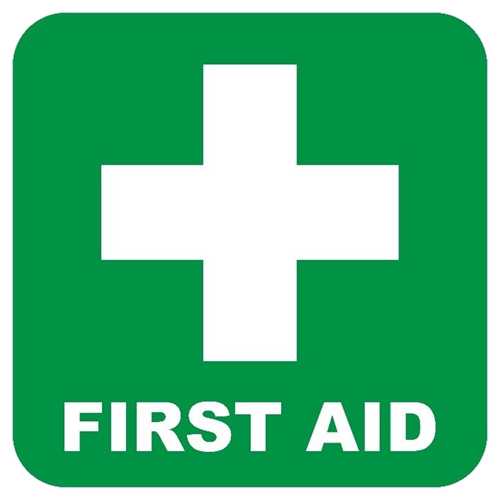
First Aid Symbol
First aid refers to the medical attention a person receives immediately following an injury. It's typically a one-time, temporary treatment to alleviate the most acute symptoms and prevent further harm or disability. For minor injuries, first aid could include cleaning and bandaging scrapes, draining blisters, removing debris from the eye, or treating a mild burn. In more severe circumstances, first aid might include life-sustaining interventions such as administering CPR or applying pressure to a wound to stop bleeding. Regardless of whether a sustained injury is minor or severe, it's critical to follow the three P's:
- Preserving life – call 911 and emergency personnel
- Preventing the injury from worsening – minimize injury and future disability
- Promoting recovery – get extended rest
Typically, first aid is administered on-site immediately after an injury. Once the injury has been addressed, the individual can receive more extensive, long-term care off-site as needed.
OSHA Requirements
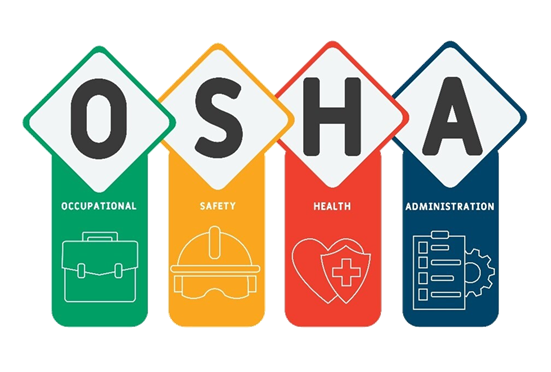
The Occupational Safety and Health Administration (OSHA) has high safety standards for workplaces across all industries. After all, safety is in their name. One of the most important safety aspects on the job is access to a first aid kit. So, does OSHA require first aid kits at all worksites? The answer is yes, and OSHA 1910.151 App A is the official standard recognized to cover this essential piece of safety equipment. OSHA requires that first aid supplies be "readily available" in the event of injury. However, the appropriate size and scope of the first aid kit depends on the context of the workplace. The American National Standards Institute (ANSI) and the International Safety Equipment Association (ISEA) worked together to develop ANSI/ISEA Z3-8.1-2015, a universal first aid kit standard for minimum performance requirements. OSHA enforces this standard. Here is a breakdown of the two main classes of first aid kits for the workplace:

- Class A first aid kits are suitable for smaller workplace operations with fewer employees and a narrower range of activities. Class A kits are designed for the most common types of injuries and include standard supplies such as bandages, tape, antibiotic ointment, etc.

- Class B first aid kits are more substantial and are intended for more significant operations with more employees engaged in a broader range of activities. Class B first aid kits contain more and a broader range of supplies. For instance, a Class B kit would have a much higher quantity of antiseptic wipes or burn treatment ointments. It would also include additional supplies, such as a splint or a tourniquet.
Beyond these standard kits, it's up to the employer to anticipate risks specific to their worksite and ensure that the proper supplies are available.
What should be in a first aid kit?
.png?h=402.667&w=861.333&hash=6F1379B3E377FF944A6F0732F3C729E4)
Though some first aid supplies might be unique to your specific workplace, there are also standard items that all workplaces should have. ANSI Z308.1-1998 is the official standard that sets the minimum requirements for workplace first-aid kits.
Below is a list of the top 25 supplies every first aid kit should include. Please note that ANSI and OSHA standards may require additional items outside the items shown below, which are highlighted below our list:
- Adhesive tape
- Antibiotic ointment
- Antiseptic
- Blanket(s)
- Burn treatment (gel soaked)
- Directions for requesting emergency assistance
- Equipment for resuscitation, such as a resuscitation bag, airway, or pocket mask
- Eye covering
- Eye/skin wash
- First aid manual
- Gauze pads (4 X 4 inches)
- Hand sanitizer
- Ice pack
- Latex or disposable nitrile gloves (preferably medical grade)
- Mouthpiece for administering CPR
- One box of adhesive bandages (multiple sizes)
- One gauze roller bandage (at least 2-inches wide)
- Scissors
- Splint
- Sterile wet wipes and pads
- Tweezers
- Two elastic wraps
- Two large gauze pads (at least 8 X 10 inches)
- Two triangular bandages
- Wound cleaning materials (e.g., sealed, moist towelettes)

Class A and Class B First Aid Kit Requirements
The Top 25 list is only a beginning reference point; many workplace first aid kits will have well over 100 different supplies for treating injuries. We've only covered the basics and encourage each facility or worksite to modify their kits as necessary to meet their specific needs. OSHA recommends companies use the OSHA 300 log, OSHA 301 forms, and their Workers' Compensation insurance carrier reports to help identify the first aid needs for their workplaces. We've provided links below to several highly recognized websites to provide ideas on other items you might want to consider stocking in your first aid kit.
First Aid Websites
- EmedicinehealthMayoclinic
- OSHA Best Practices Guide
- American Red Cross First Aid Guide
- American Red Cross First Aid Book
Once you have assembled your kit, be sure to install it in an accessible location that is kept clean and dry. Ensure all employees know where the first aid kit is located and how to access it. And, as with most things, your first aid kit needs to be maintained, regularly checked for expiration dates and restocked as necessary.
First Aid Training and Certification

For worksites with no medical clinic or hospital nearby, OSHA requires basic first aid traiining and for employers to have someone on staff who is trained to administer first aid. Even for worksites with such healthcare close by, first aid training is a good idea for all employees. An ideal first-aid training program is created in conjunction with medical experts and designed to address the anticipated risks of a specific work site. Whatever training is offered, the program must comply with all applicable OSHA standards and regulations, such as incorporating necessary first aid intervention and adult cardiopulmonary resuscitation (CPR).
The three most recognized training entities that offer first aid classes are the American Heart Association, American Red Cross, and the National Safety Council (NSC). These organizations offer first aid training and certification designed for non-medical experts to administer medical support in various emergencies.
The American Red Cross training offers in-person, online, and blended learning environments. After finishing the course and passing all assessments from one of these organizations, individuals receive a first aid certificate and a CPR certification.
PPE Requirements
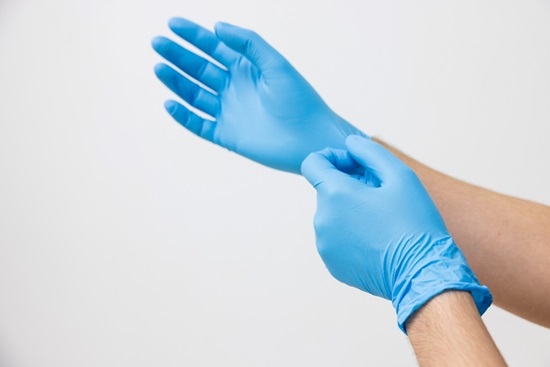
When administering first aid, the one performing treatment must wear proper personal protective equipment (PPE) to prevent exposure to blood or other bodily fluids. One critical piece of equipment is medical-grade disposable gloves. Wearing gloves can significantly reduce the risk of infection to the patient and the first aid provider.
It's also important to consider wearing safety glasses or face shields in the event there are splashing fluids. Below are images of some of the most commonly stocked PPE items in a first aid kit. Remember that it is essential to regularly check your first aid kit for expired or compromised items. Rather than purchasing an entirely new kit when certain supplies expire or run low, consider replenishing your kits with individual items as needed. Before we move on, please remember to dispose of any equipment in a biohazard bag that has come into contact with bodily fluids or blood.
Overall PPE
The best first aid kit is one that never needs to be used. Wearing the proper personal protective equipment (PPE) can help minimize workplace accidents requiring first aid. Users worldwide recognize MCR Safety for supplying numerous forms of personal protection. Overall, we have eight protection categories that comprise our product assortment, each designed to limit workplace injuries that may require first aid treatment.
Basic cut injuries are one of the most common workplace accidents. Wearing proper cut-resistant gloves and sleeves can help reduce these injuries and are ideal for applications involving sharp objects. Wearing this type of PPE provides one additional level of protection before a first aid kit is ever needed. The image below highlights the wide range of cut protection MCR Safety offers with our A2 to A9 cut-resistant gloves. Click the image to explore our online catalog to find the right pair for your application.
Common Questions

If a victim refuses first aid, what should you do?
- If an injured person denies first aid treatment, you should immediately call 911 and stay with the individual until help arrives.
How long does first aid certification last?
- Certification lasts for two years. Abbreviated courses are available for individuals to renew their training and certification.
What are the three aims of first aid?
1. To save lives
2. To prevent further injury
3. To aid in the healing process
Aiding You in Safety
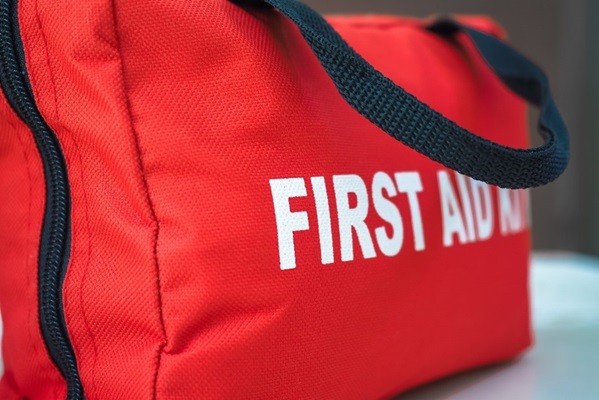
There is risk in performing any job; however, knowing that proper safety procedures and protocols are in place when unforeseen injuries occur is reassuring. One of those safety procedures is having proper first aid supplies and someone who knows how to use them during an emergency. At MCR Safety, your safety is our top priority, which is why we continue investing in creating content geared toward keeping you safe. Whether you're a rancher, a delivery person, or a warehouse worker, there will likely come a day that you'll need first aid, and we hope the above has shed some light on what's needed when that day occurs.
Click the below image to leave us comments, questions, or any concerns.
For over 45 years, MCR Safety has proven to be a world leader in gloves, glasses, and garments. Whether it's a face shield worn by emergency personnel or a box of disposable gloves available inside a first aid kit, we are there providing solutions to workplace hazards. It's all part of our commitment to protect people.
No matter your industry, we have the personal protective equipment you need.
Learn more about MCR Safety by checking out our most recent video. For more information, browse our website, request a catalog, find a distributor, or give us a call at 800-955-6887.
About the Author
Related Articles
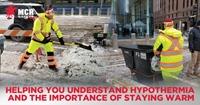
Helping You Understand Hypothermia and the Importance of Staying Warm
This article will review what hypothermia is and what usually causes it. You also will learn the...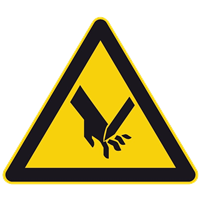
Learn about Lacerations
Lacerations are one of the most common causes of emergency room visits across the country. Every....png?h=105&iar=0&mh=200&mw=200&w=200&hash=0DB04B7B4064AE10C2F1A3EC69DDC915)
Top 50 Environmental Health and Safety (EHS) Acronyms
Behind the many acronyms you'll soon learn about are the professionals who keep the environment...Latest Articles





.png?h=340&w=650&hash=27C59969A1AF2D696B829D2546DA5D1D)
.png?h=351.333&w=657.667&hash=D2CCDD4B0C3F4EE72BF1282B765A7C42)
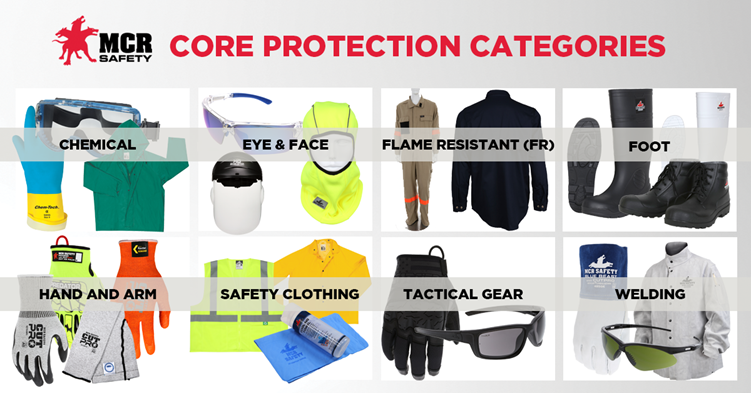
.png?h=441.667&w=823.667&hash=4F2FF37CF5AA61F120A37C6AE688AB7B)
